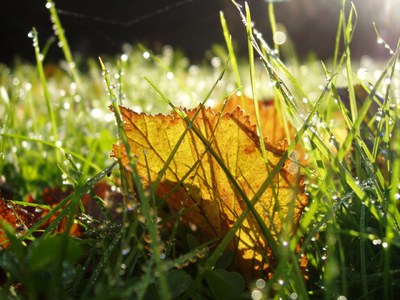Best Time to Fertilize the Lawn
Should I fertilize my lawn now?
Now is the best time of the year to fertilize your lawn. The key to a healthy turf is a deep, thick root system. Lawns focus on root growth in fall. If you fertilize only once a year, it should be in early September.
What fertilizer is best?
Lawn fertilizers have three numbers listed on the bag: the percentages of nitrogen, phosphate and potash. A suitable winterizer fertilizer will be approximately 25-0-10, but don’t get too worried about exact numbers.
Nitrogen promotes growth and green color. The finest fertilizers will contain slow-release nitrogen, often listed as methylene urea or water insoluble nitrogen on the bag. Slow-release nitrogen provides consistent growth through fall and early spring.
Many lawn fertilizers contain little or no phosphate. That’s okay; most soils in North Dakota are already rich in phosphate.
Potash improves winter hardiness and the lawn’s tolerance to stress.
What about weed-and-feed fertilizers?
Weed-and-feed fertilizers are convenient but fail to control many weeds.
Broadleaf herbicides applied in fall need to be absorbed through the leaves of weeds. Herbicide granules often drop off the weeds before they are absorbed. Herbicide sprays are more likely to be absorbed.
Weed-and-feed products offer fewer herbicides (usually only 2,4-D and perhaps MCPP) compared to many spray products.
What is a better way to control weeds?
A Trimec formulation (2,4-D, MCPP and dicamba) is effective. New products have added quinclorac for extra killing power. Such products include Weed B Gon Plus Crabgrass Control and Roundup for Lawns.
It’s best to wait until mid to late September and use a spray product.
Spot spraying weeds rather than spraying the whole yard can save money and reduce your exposure to these toxic chemicals.
Written by Tom Kalb, Extension Horticulturist, North Dakota State University. Published in the NDSU Yard & Garden Report for September 7, 2017.
The photo was made available under Creative Commons licenses specified by the photographer: Auntie P. Source: Stier, J.C. 2001. Lawn maintenance. University of Wisconsin.


